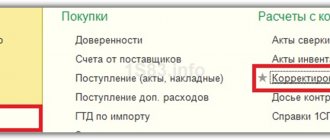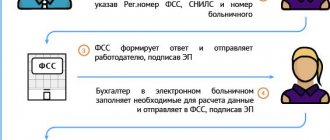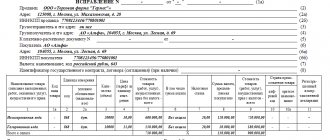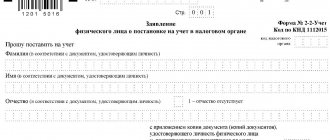In this article we will look at how relationships with customers are taken into account in accounting. Which account is used to record customers, what postings are made. Transactions during a regular sale, upon receipt of an advance from a buyer or a bill of exchange are considered.
To account for settlements with buyers, account 62 “Settlements with buyers” is used, the debit of which reflects the buyer’s debt to the seller, and the credit reflects payment for goods, work, and services.
Buyers can pay the seller either after receiving the goods, or by making an advance payment, that is, by transferring the advance to the seller’s bank account. Payment by the buyer for the goods is made on the basis of an issued invoice, a sample of which can be viewed here.
Accounting for settlements with customers during sales
Revenue from the sale of goods (work, services) is recognized as income from an ordinary type of activity and is reflected in the credit of account 90 “Sales”.
If the sale is one-time and is not a regular activity of the enterprise (for example, the sale of a fixed asset), then the proceeds are reflected as part of other income under the credit of account 91 “Other income and expenses”.
These two accounts 90 and 91 will be discussed in detail a little later; they are interesting and unlike other accounts, they have their own characteristics. It is necessary to calculate VAT on the sale price of goods (works, services) and send it for payment.
| ★ Best-selling book “Accounting from scratch” for dummies (understand how to do accounting in 72 hours) > 8000 books purchased |
Postings to account 62 during regular sales: (click to expand)
| Debit | Credit | Operation name |
| 62 | 90/1 | Revenue from the sale of goods (works, services) is reflected |
| 90/3 | 68 | VAT accrued on goods sold (work, services) |
| 62 | 91/1 | Revenue from the sale of fixed assets, intangible assets, materials is reflected |
| 91/2 | 68 | VAT accrued on sold assets |
| 51 | 62 | Payment received from buyer |
The issuance of funds from the cash register to accountable persons is reflected by the entry...
1. D account.50 "Cash" Account 71 "Settlements with accountable persons" 2. D account.71 "Settlements with accountable persons" Account. 26 “General business expenses” 3. D account 71 “Settlements with accountable persons” Account. 51 “Current accounts” 4. D account 71 “Settlements with accountable persons” Account 50 “Cash”
The salary of the director of the organization was paid from the cash register
1. D 70 “Settlements with personnel for wages” To account 51 “Cash accounts” 2. D 70 “Settlements with personnel for wages” Account. 50 “Cashier” 3. D account. 26 “General business expenses” Account 70 “Settlements with personnel for wages”
3. D sch. 20 “Main production” Account 70 “Settlements with personnel for wages”
46. Entry “D count. 51 “Current accounts” To account. 62 “Settlements with buyers and customers” means ...
1. offset of the previously received advance 2. transfer of the advance to the supplier 3. receipt of funds from the buyer in the final payment
47. Record D count. 60 “Settlements with suppliers and contractors” Account. 51 “Current accounts” means:
1. refund of money to buyers 2. transfer of advance to supplier 3. receipt of funds from buyer 4. offset of previously received advance
48. Cash flow transactions are reflected in account 50 “Cash” based on ...
1. bank statements 2. incoming and outgoing cash orders 3. advance reports
49. Cash flow transactions are reflected in account 51 “Current accounts” based on ...
1. bank statements 2. payment orders 3. incoming and outgoing cash orders 4. advance reports
50. The receipt of credits and borrowings by an organization is reflected in accounting by an entry in the debit of account 51 “Current accounts” and the credit of accounts ...
1. 55 “Special accounts in banks” 2. 66 “Settlements on short-term loans and borrowings” 3. 58 “Financial investments” 4. 91.1 “Other income”
Receipt of advance payment from the buyer is reflected by recording...
1. Dt count. 51 “Current accounts” Ktsch. 60 “Settlements with suppliers and contractors” 2. Dt account. 60 “Settlements with suppliers and contractors” Kt. 10 “Materials” 3. D-t. 62 “Settlements with buyers and customers” Ktsch. 51 “Current accounts” 4.D-t account. 51 “Current accounts” Ktsch. 62 “Settlements with buyers and customers 5. Dt account. 62 “Settlements with buyers and customers” Ktsch. 60 “Settlements with suppliers and contractors”
54. When receiving an advance from customers for the supply of products, an entry is made in the accounting system to the debit of account 51 “Current accounts” and the credit of the account ...
1.60 “Settlements with suppliers and contractors” 2. 62 “Settlements with buyers and customers” 3. 71 “Settlements with accountable persons” 4. 90 “Sales”
Acceptance of fixed assets acquired for a fee onto the balance sheet is reflected by the entry...
1. Dt count. 01 “Fixed assets” Ktsch. 60 “Settlements with suppliers and contractors” 2. Dt account. 01 “Fixed assets” Ktsch. 08 “Investments in non-current assets” 3. D-t account. 08 “Investments in non-current assets” Ktsch. 60 “Settlements with suppliers and contractors”
Accounting for the availability and movement of monetary documents is carried out on the account...
1. 50 “Cash” 2. 51 “Current accounts” 3. 55 “Special bank accounts” 4. 57 “Transfers in transit”
Accounting for settlements with buyers (customers) for goods and materials supplied to them and services provided is carried out on a synthetic account...
1. 51 “Settlements” 2. 60 “Settlements with suppliers and contractors” 3. 62 “Settlements with buyers and customers” 4. 91 “Other income and expenses”
The actual costs of acquiring fixed assets for a fee are reflected in the account...
1. 01 “Fixed assets” 2. 08 “Investments in non-current assets” 3. 20 “Fixed production” 4. 84 “Retained earnings (uncovered loss)”
59. The release of materials for general production needs is reflected by an entry in the credit of account 10 “Materials” and the debit of the account ...
1. 20 “Main production” 2. 23 “Auxiliary production” 3. 25 “General production expenses” 4. 26 “General business expenses” 5. 28 “Defects in production”
60. The release of materials for general business needs is reflected by an entry on the credit of account 10 “Materials” and the debit of the account ...
1. 20 “Main production” 2. 23 “Auxiliary production” 3. 25 “General production expenses” 4. 26 “General business expenses” 5. 28 “Defects in production”
Accounting for advances received in settlements with customers
If the buyer pays for the goods in advance and makes an advance payment, then to account for settlements with buyers, in this case, subaccount 2 “advance received” is opened on account 62, while subaccount 1 will reflect settlements with buyers in the general case.
VAT is considered and payable on advances received. Then, when goods, works or services are transferred to the buyer, VAT is charged again, this time on the proceeds. The accrued amount of VAT on the advance received is restored, and then an entry is made to offset the advance. You can read more about accounting for VAT on advance payments in the article: “Accounting for VAT on advance payments and gratuitous transfers.”
Postings for accounting for advances received (account 62)
| Debit | Credit | Operation name |
| 51 | 62. Advance received | An advance was received from the buyer to the bank account |
| 76.VAT on advances received | 68 | VAT is charged on the advance received |
| 62/1 | 90/1 | Revenue from sales of goods is reflected |
| 90/3 | 68 | VAT accrued on goods sold |
| 62. Advance received | 62/1 | Offset of advance against debt repayment |
| 68 | 76.VAT on advances received | Accepted for deduction of VAT in connection with the sale of goods paid in advance |
Accounting for advances issued and received (prepayments)
In cases where the amount of the prepayment exceeds the cost of delivery, the difference is either returned by the supplier to the bank account or taken into account as an advance payment for subsequent deliveries. Accounting records for the issuance of an advance against the future supply of material assets are presented in table. 9.6.
| Table 9.6 | |||
| Journal of business transactions | |||
| Contents of a business transaction | Account correspondence | Valuation, rub. | |
| debit | credit | ||
| 1. Prepayment has been made to suppliers | 60.2 | Advance amount | |
| 2. Inventories received as prepayment have been capitalized | 10, 41 | 60.1 | Inventory cost – VAT |
| 3. VAT included | 60.1 | VAT amount | |
| 4. The advance payment has been offset | 60.1 | 60.2 | Credit amount |
| 5. The difference was returned to the supplier’s bank account | 60.2 | Difference |
In cases where the prepayment amount is less than the contractual delivery cost, a credit is applied to the prepayment amounts, and the remaining accounts payable are paid in the usual way.
Example 9.1. An advance payment was made to the materials supplier in the amount of RUB 10,000.
In cases where the amount of the prepayment exceeds the cost of delivery, the difference is either returned by the supplier to the bank account or taken into account as an advance payment for subsequent deliveries.
Accounting records for the issuance of an advance against the future supply of material assets are presented in table. 9.6.
| Table 9.6 | ||
| Journal of business transactions | ||
| Contents of a business transaction | Account correspondence | Valuation, rub. |
| debit | credit | |
| 1. |
Accounting for bills received from the buyer:
If the buyer issued a promissory note to the seller, it must be accounted for in subaccount 3 “Bill of note received” of account 62. After the sale of the product, posting D51 K62. Bill of exchange received - this bill is repaid.
If the nominal value of a bill of exchange received exceeds the sale price, then the excess amount is reflected in entry D62. Bill of exchange received K 90/1.
Postings to account 62 when paying by bill of exchange:
| Debit | Credit | Operation name |
| 62 | 90/1 | Revenue from the sale of goods is reflected. Accounting for a bill received from the buyer. |
| 62.Bill received | 62/1 | The bill received from the buyer was taken into account |
| 51 | 62.Bill received | The received bill is repaid |
| 62.Bill received | 90/1 | The excess of the nominal value of the bill over the sale price is reflected |
An example of accounting for settlements with buyers and customers. Postings
| The organization Alpha LLC received an advance payment from the Beta LLC company for the shipment of finished products in the amount of 236,000 rubles. A week later, I shipped part of the finished products worth 47,200 rubles. (including VAT RUB 7,200) How to account for these transactions? |
In fact, account 62 “Settlements with buyers” reflects the buyer’s debt to the seller, that is, accounts receivable. Postings to account 62 are made at the time the sale is made, that is, at the time the goods are shipped.
Thus, account 62 reflects settlements with customers and 3 sub-accounts can be opened on it: (click to expand)
- subaccount 1 – to reflect settlements for regular sales;
- subaccount 2 – to account for the advance received;
- subaccount 3 – for accounting for bills received.
In the next article we will look at how to carry out accounting of accounts payable: “Accounting for short-term and long-term loans and borrowings (accounts 66 and 67)“.
Transfer of advance payment to the supplier
Settlements with suppliers and contractors are carried out on account 60 “Settlements with suppliers and contractors” (Instructions for using the Chart of Accounts, approved by Order of the Ministry of Finance of the Russian Federation dated October 31, 2000 N 94n). The account balance shows:
- credit - debt to the supplier;
- debit - an advance issued to the supplier.
The actual payment to the supplier, which was made according to the bank statement, is reflected in the program by the document Write-off from the current account transaction type Payment to the supplier.
The document Write-off from a current account can be created based on the Payment order document using the link Enter a document written off from a current account . PDF
If the Payment order is not generated in 1C, then the document Write-off from the current account transaction type Payment to supplier can be entered through the Bank and cash desk section - Bank - Bank statements - Write-off button.
The document Write-off from a current account can also be downloaded from the Client-Bank program or directly from the bank if the 1C:DirectBank service is connected.
The document states:
- from – date of payment to the supplier, according to the bank statement;
- The recipient —the supplier to whom the payment was made—is selected from the Counterparties directory;
- Agreement - a document according to which settlements with the supplier are carried out. Type of agreement - With the supplier .
In our example, settlements under the agreement are carried out in rubles, therefore, as a result of selecting such an agreement, the following subaccounts for settlements with the supplier are automatically established Write-off from the current account
- Settlement account – 60.01 “Settlements with suppliers and contractors”;
- Advances account – 60.02 “Settlements for advances issued.”
If necessary, accounts for settlements with the supplier can be corrected in the document manually or configured for the automatic insertion of other accounts for settlements with the counterparty.
- Amount – payment amount in rubles, according to the bank statement;
- VAT rate – the VAT rate corresponding to the future supply;
- VAT amount – the amount of VAT corresponding to the future supply. Calculated automatically from Amount and the selected VAT Rate ;
- DDS item is a cash flow item. In our example, fixed assets are acquired, therefore the DDS Article is indicated with the Type of movement - Acquisition, creation, modernization and reconstruction of non-current assets .
Selecting the DDS Item in the payment document is necessary to automatically fill out the Cash Flow Report.
- In. Number and In. Date – number and date of the payment order. Filled in automatically with data from the Number field from the Payment order document . If the document Write-off from a current account is not filled out on the basis of a Payment order , then the number and date of the payment must be entered manually.
BukhExpert8 advises filling out the number and date of the payment order, because if VAT is accepted for deduction on an advance invoice or an invoice for the supply of goods from a supplier, this particular detail will automatically be entered into the document Invoice received and then reflected in the group. 7 “Number and date of document confirming payment of tax” of the purchase book. PDF
- Bank account - the bank account of the organization from which the payment was made, selected from the Bank Accounts directory;
- Debt repayment – Automatically . With this method, the program automatically determines the payment status: advance or repayment of debt for settlements with the specified Recipient in the context of the concluded Agreement .
If there is a debt to the supplier under the contract, then the debt is repaid first, and the balance will be taken into account as an advance. If there is no debt, then the entire amount will be taken into account as an advance.
If the accountant does not want the program to automatically determine the payment status, then you can choose other methods of debt repayment .
Postings according to the document
Due to the fact that there was no debt to the supplier Avtopark LLC under supply agreement No. 418 dated March 12, 2018, the transferred amount will be classified by the program as an advance:
- Dt 60.02 Kt - advance payment issued to the supplier.







